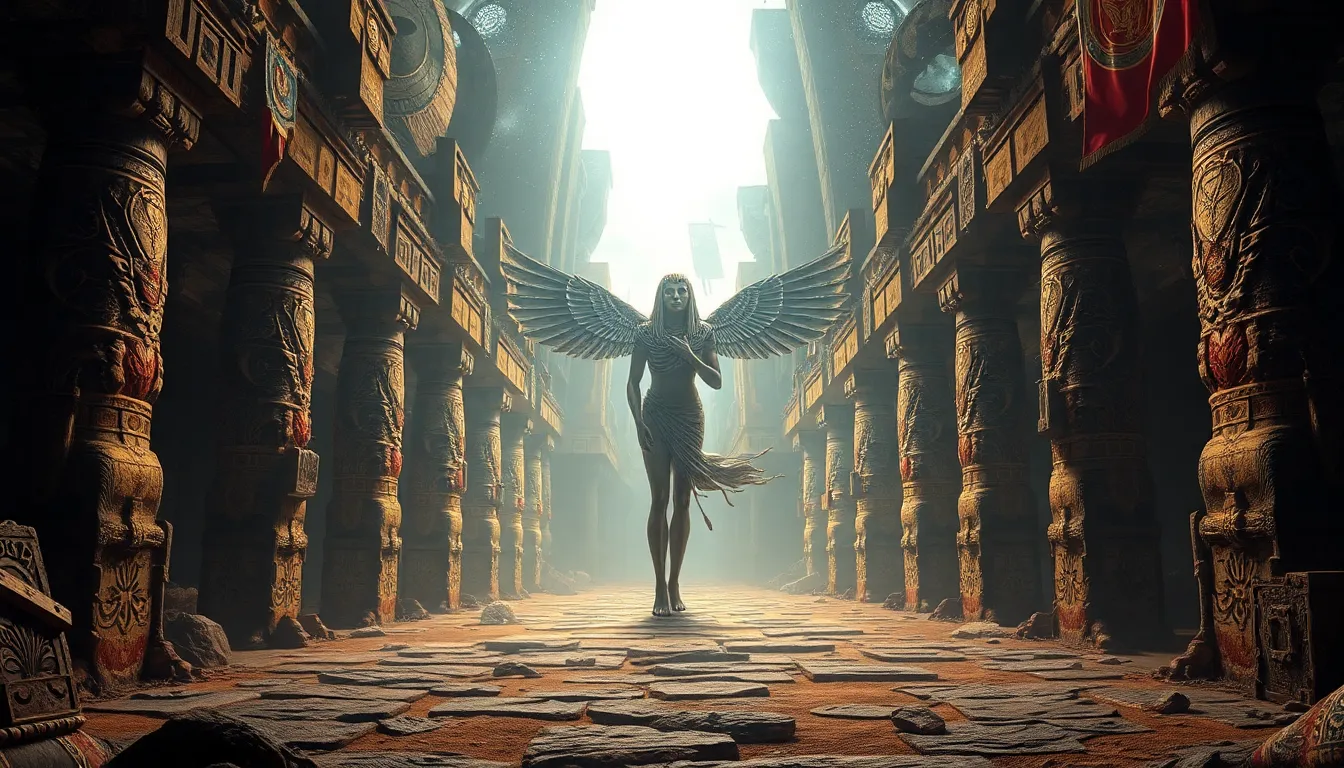The Spiritual Journey of the Dead in Egyptian Beliefs
I. Introduction
Ancient Egyptian beliefs about death and the afterlife are profound and complex, reflecting a rich spiritual landscape that permeated every aspect of their culture. The Egyptians viewed death not as an end, but as a transition to another phase of existence. This spiritual journey was of paramount importance, shaping their practices, rituals, and worldview.
II. The Concept of the Afterlife
In ancient Egyptian religion, the afterlife was a continuation of life on Earth, where the deceased would enjoy eternal existence. This belief was intricately linked to the concept of Ma’at, which represented truth, balance, and cosmic order. The afterlife was not just a destination but a realm governed by Ma’at, where the deceased would face judgment based on their earthly deeds.
A. Definition of the afterlife in ancient Egyptian religion
The afterlife, known as the Field of Reeds, was envisioned as a paradise where souls could live in peace and abundance, much like their earthly lives. To reach this idyllic realm, the dead had to navigate a series of challenges that tested their worthiness.
B. The significance of Ma’at in afterlife beliefs
- Ma’at was essential for maintaining cosmic order.
- It dictated the moral code by which individuals lived their lives.
- The balance between right and wrong determined the fate of the soul after death.
III. The Role of the Ka and Ba
Central to the spiritual journey of the deceased are the concepts of Ka and Ba. These two vital components of the soul played crucial roles in the afterlife journey.
A. Explanation of the Ka and Ba concepts
- Ka: The Ka represents the life force or spirit of the individual. It was believed to reside in the tomb and required sustenance in the form of offerings.
- Ba: The Ba is often depicted as a human-headed bird and represents the personality or individuality of the deceased. It could travel between the living world and the afterlife.
B. How these spiritual entities influence the journey of the deceased
The Ka required a resting place and sustenance, while the Ba needed to be freed to navigate the afterlife. Together, they shaped the experiences and the journey of the deceased, ensuring their continued existence in the afterlife.
IV. The Journey Through the Duat
The Duat, or the underworld, is a significant element of the Egyptian spiritual journey. It is depicted as a dark, complex realm filled with obstacles and challenges.
A. Description of the Duat and its significance
The Duat was not merely a place of punishment but a necessary passage for the soul, where it confronted its past and the consequences of its actions. The journey through the Duat was symbolic of the trials one must face in life.
B. Key trials and challenges faced by the deceased in the Duat
- Confronting various gods who tested the soul’s worthiness.
- Overcoming dangerous creatures, such as serpents and demons.
- Navigating rivers and obstacles that represented life’s hardships.
V. The Weighing of the Heart Ceremony
This ceremony was a pivotal moment in the journey of the deceased. It determined the fate of the soul based on the balance of one’s heart against the Feather of Ma’at.
A. Overview of the ceremony and its purpose
The Weighing of the Heart involved Anubis, the god of mummification, who oversaw the process. The heart of the deceased was placed on one side of a scale, while the Feather of Ma’at, symbolizing truth and justice, was placed on the other.
B. The role of Anubis and the significance of the Feather of Ma’at
- Anubis guided souls through the Duat and ensured proper mummification.
- The Feather of Ma’at represented honesty and virtue.
- A lighter heart than the feather indicated a worthy soul, allowing entry into the afterlife.
VI. The Importance of Funerary Practices
Funerary practices were vital in ensuring a successful journey to the afterlife. They were deeply rooted in the belief that the dead needed assistance in their transition.
A. Explanation of burial rituals and their significance
The Egyptians believed in elaborate burial rituals, which included mummification, offerings, and prayers. These practices were intended to honor the deceased and provide for their needs in the afterlife.
B. The role of tombs and grave goods in aiding the deceased’s journey
- Tombs were constructed to be the eternal resting places of the dead.
- Grave goods, such as food, jewelry, and tools, were included to support the deceased in the afterlife.
- Paintings and inscriptions in tombs depicted scenes of the afterlife, serving as guides for the soul.
VII. Symbolism and Iconography in Egyptian Funerary Culture
The art and symbols used in funerary culture reflect the beliefs surrounding the spiritual journey. Various symbols carry deep meanings related to death and the afterlife.
A. Analysis of common symbols
- Scarab: Represented rebirth and regeneration, symbolizing the cycle of life and death.
- Ankh: The symbol of life, representing the hope for eternal existence.
- Osiris: The god of the afterlife, embodying resurrection and the promise of life after death.
B. How art and inscriptions reflect beliefs about the spiritual journey
Artworks and inscriptions in tombs served not only as decoration but also as vital elements that guided and protected the deceased in their journey. They were imbued with prayers and spells that invoked divine protection and assistance.
VIII. Conclusion
The spiritual journey in ancient Egyptian beliefs is a testament to their understanding of death as a continuation rather than an end. The intricate beliefs surrounding the afterlife, the significance of Ma’at, and the roles of the Ka and Ba reveal a culture deeply engaged with questions of morality, existence, and the cosmos. Today, these ancient beliefs continue to influence modern understandings of death and the afterlife, highlighting the lasting impact of Egyptian mythology on contemporary spiritual thought.




